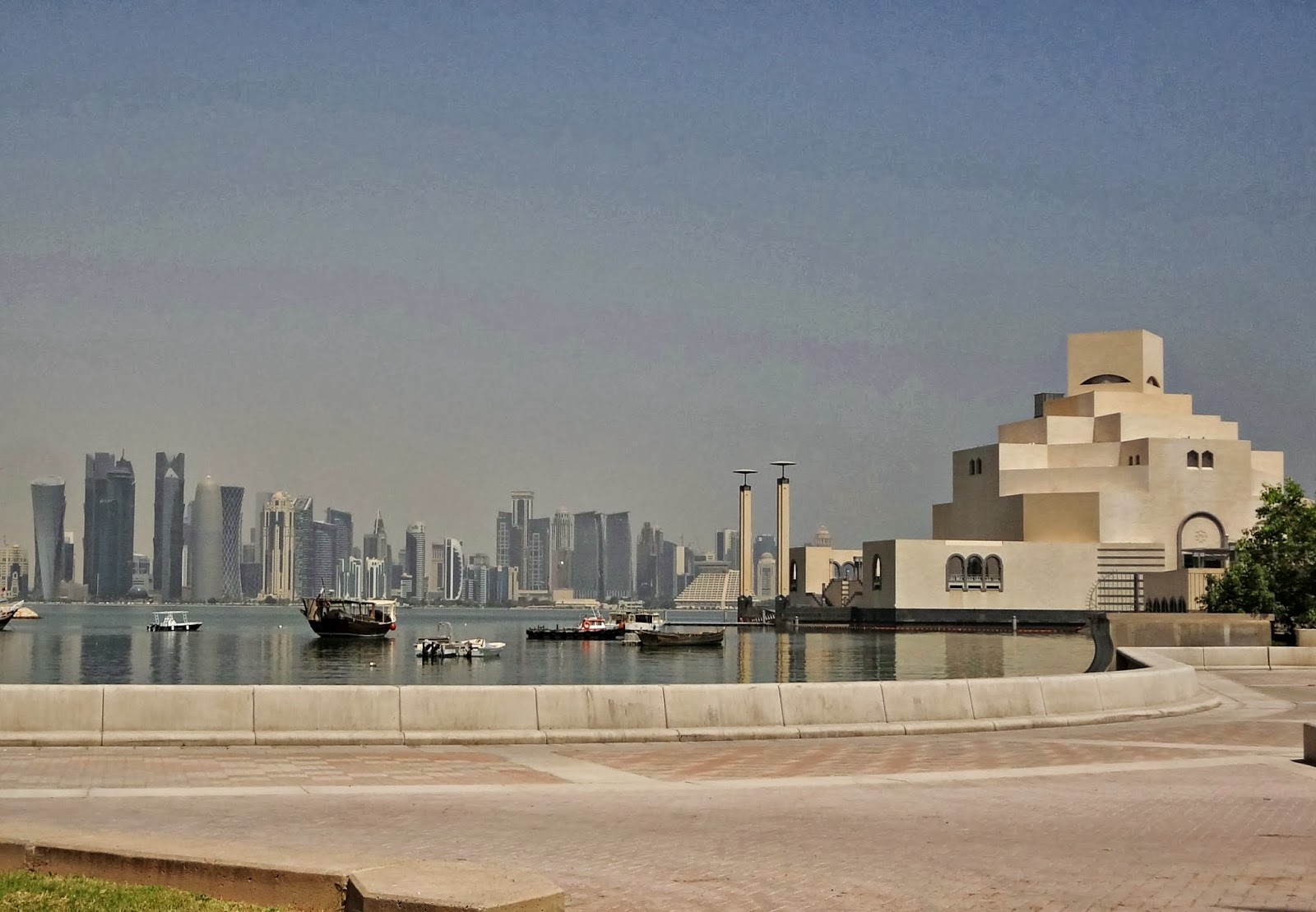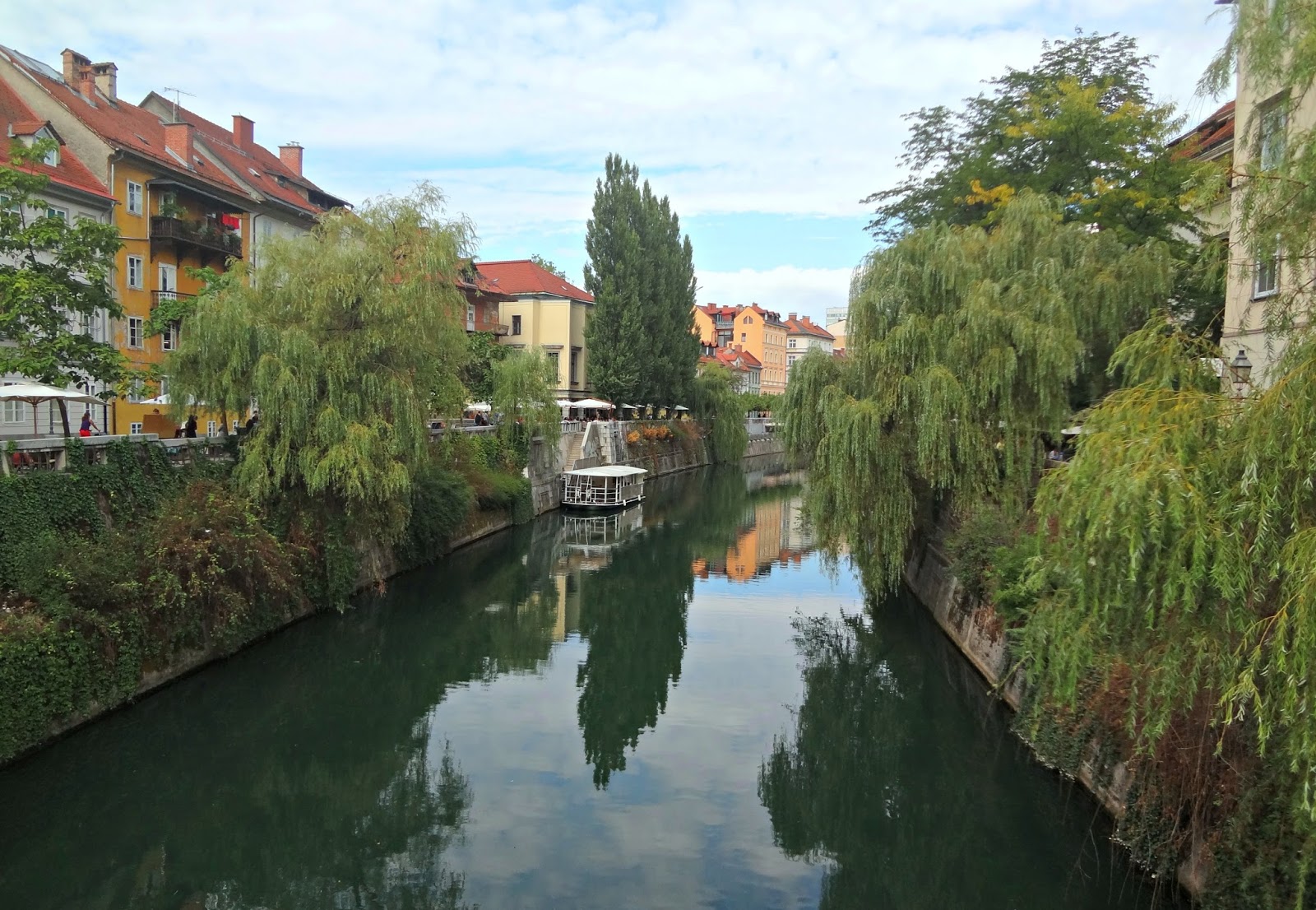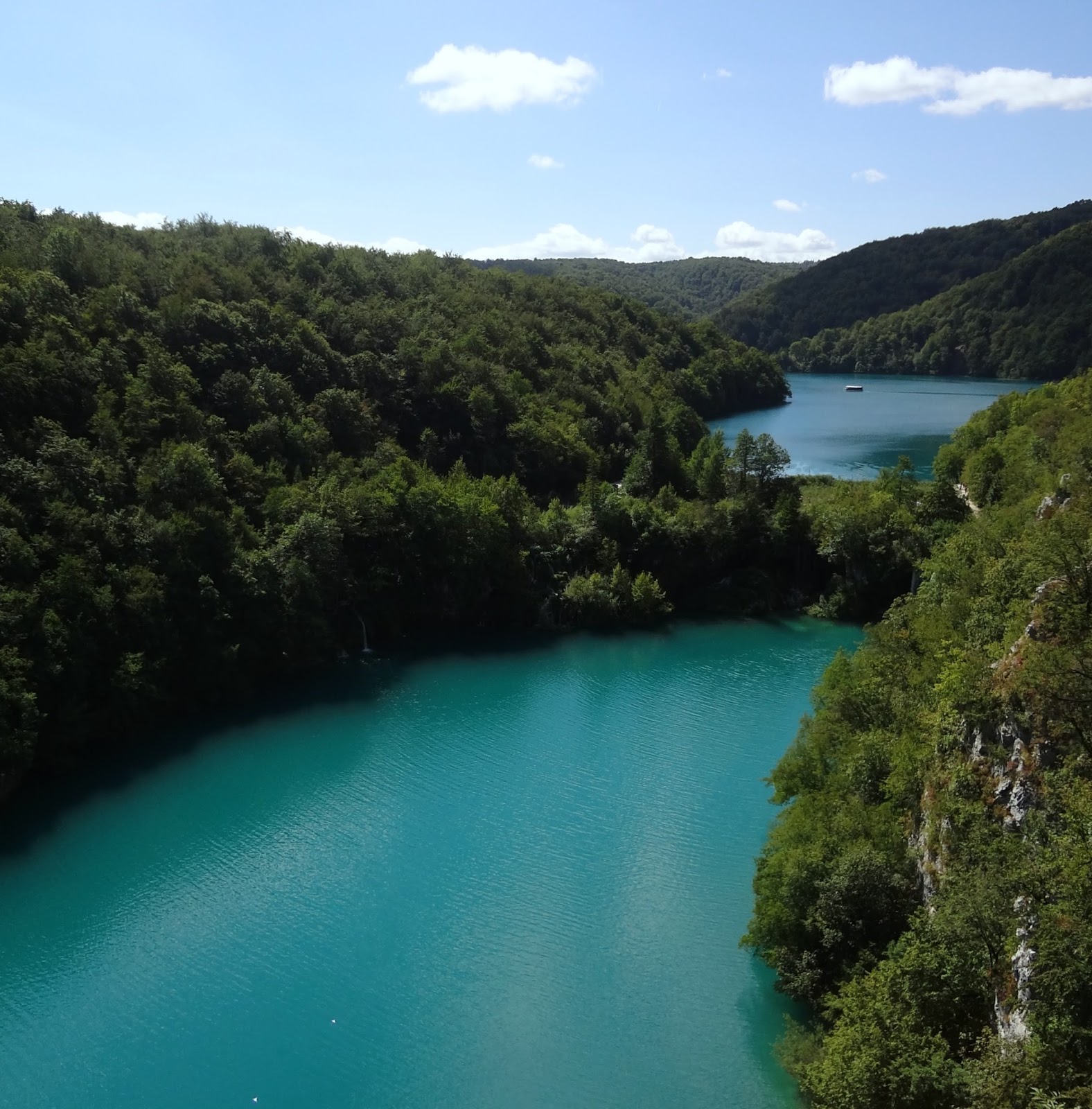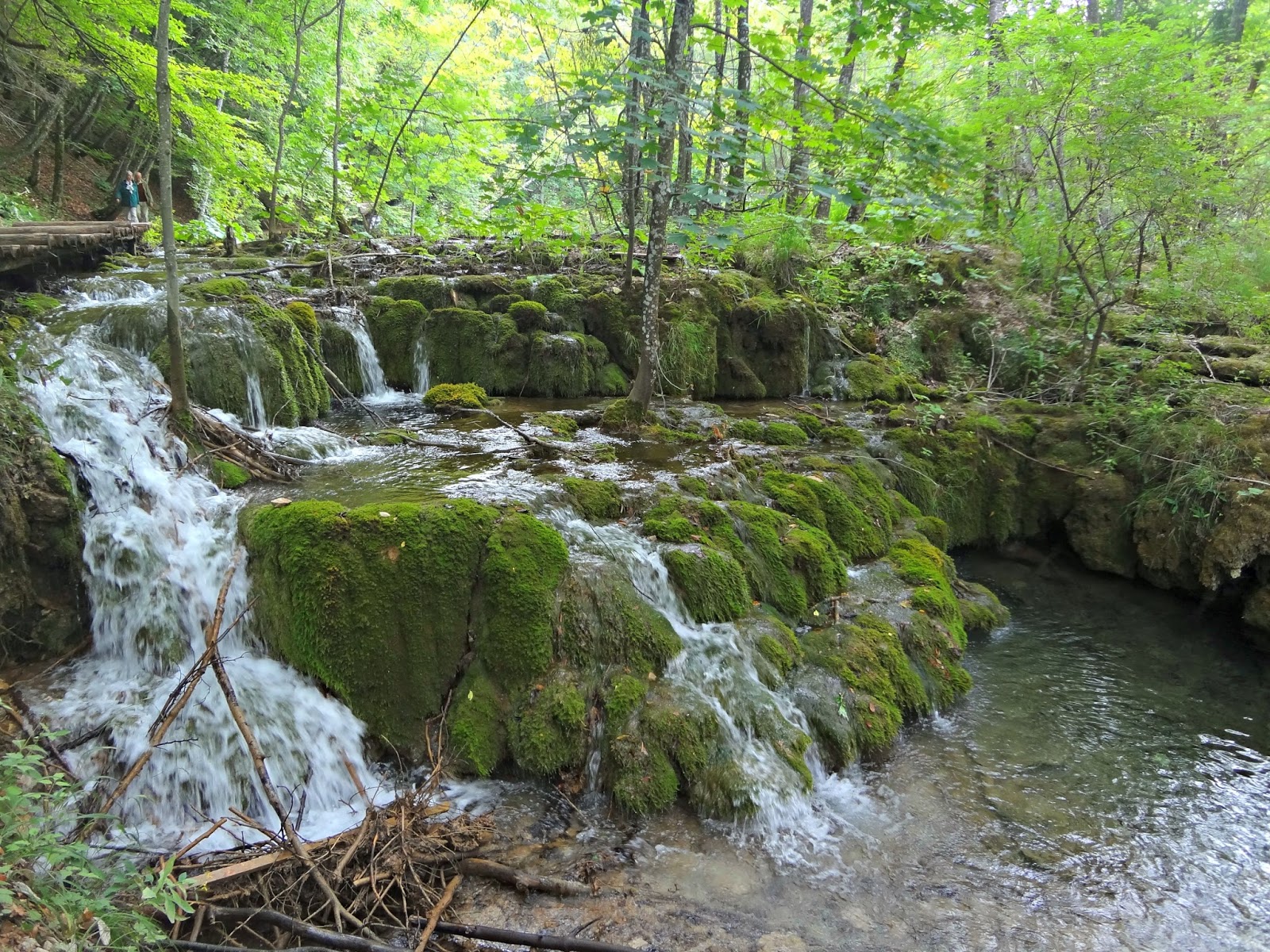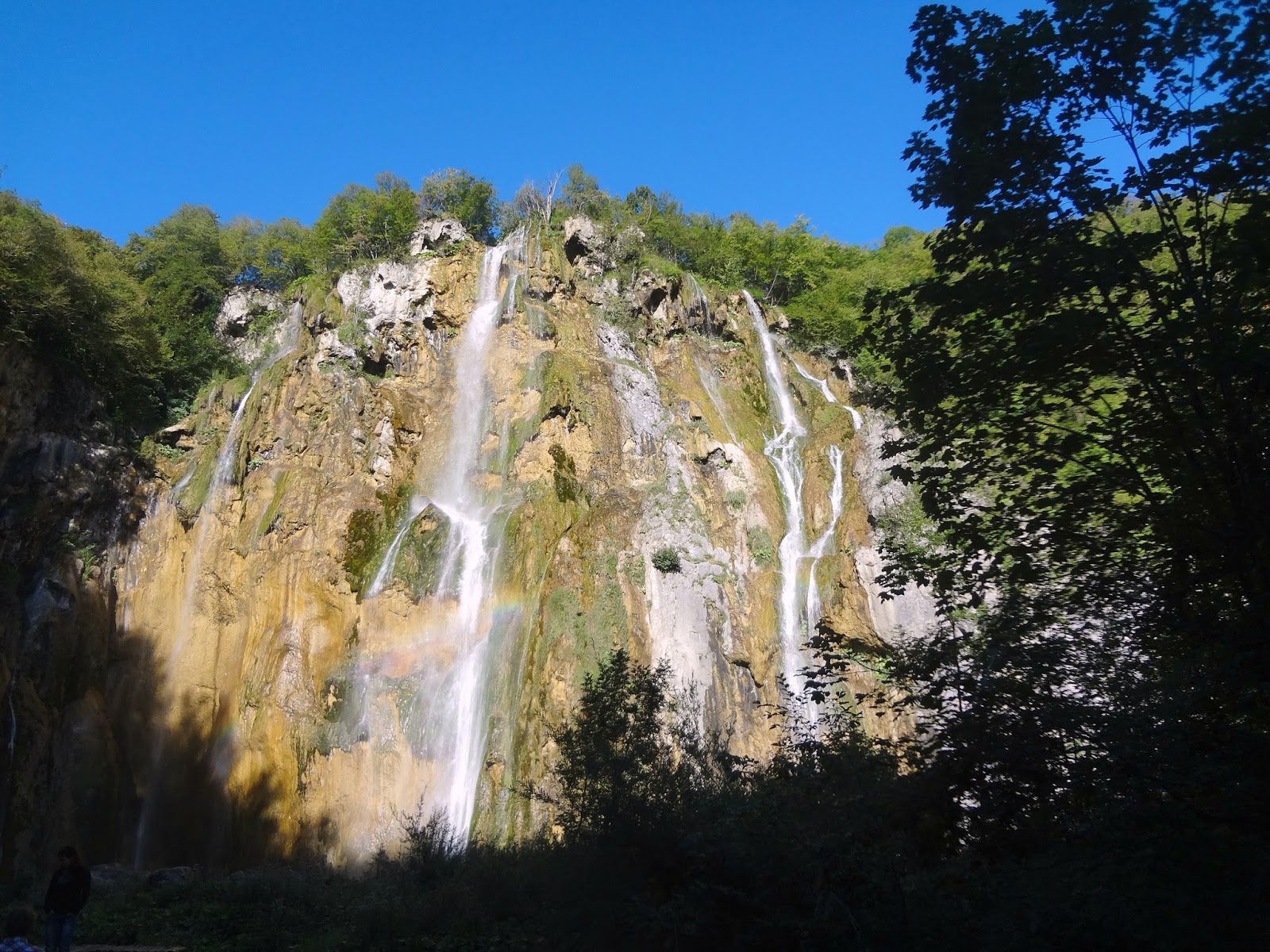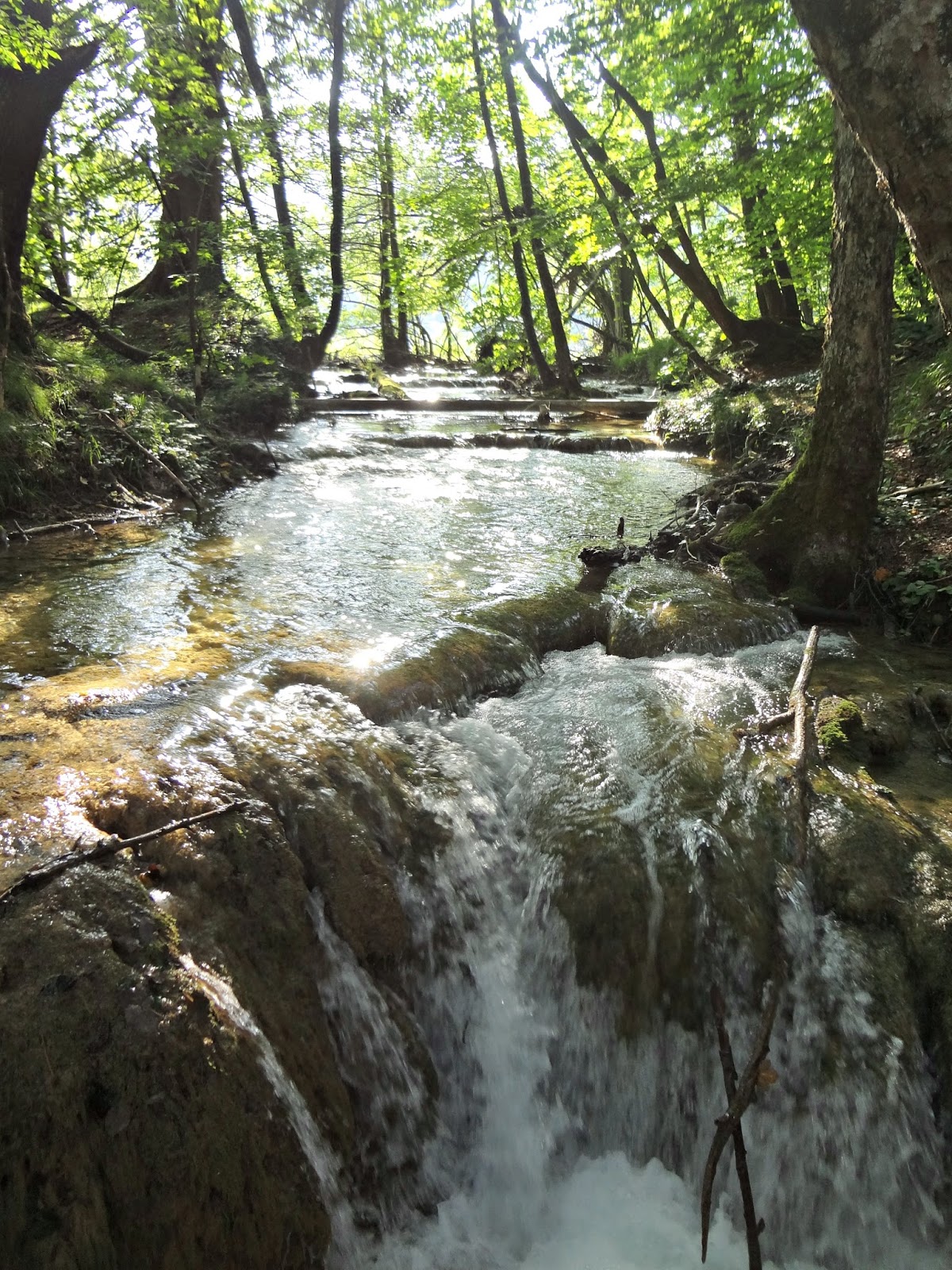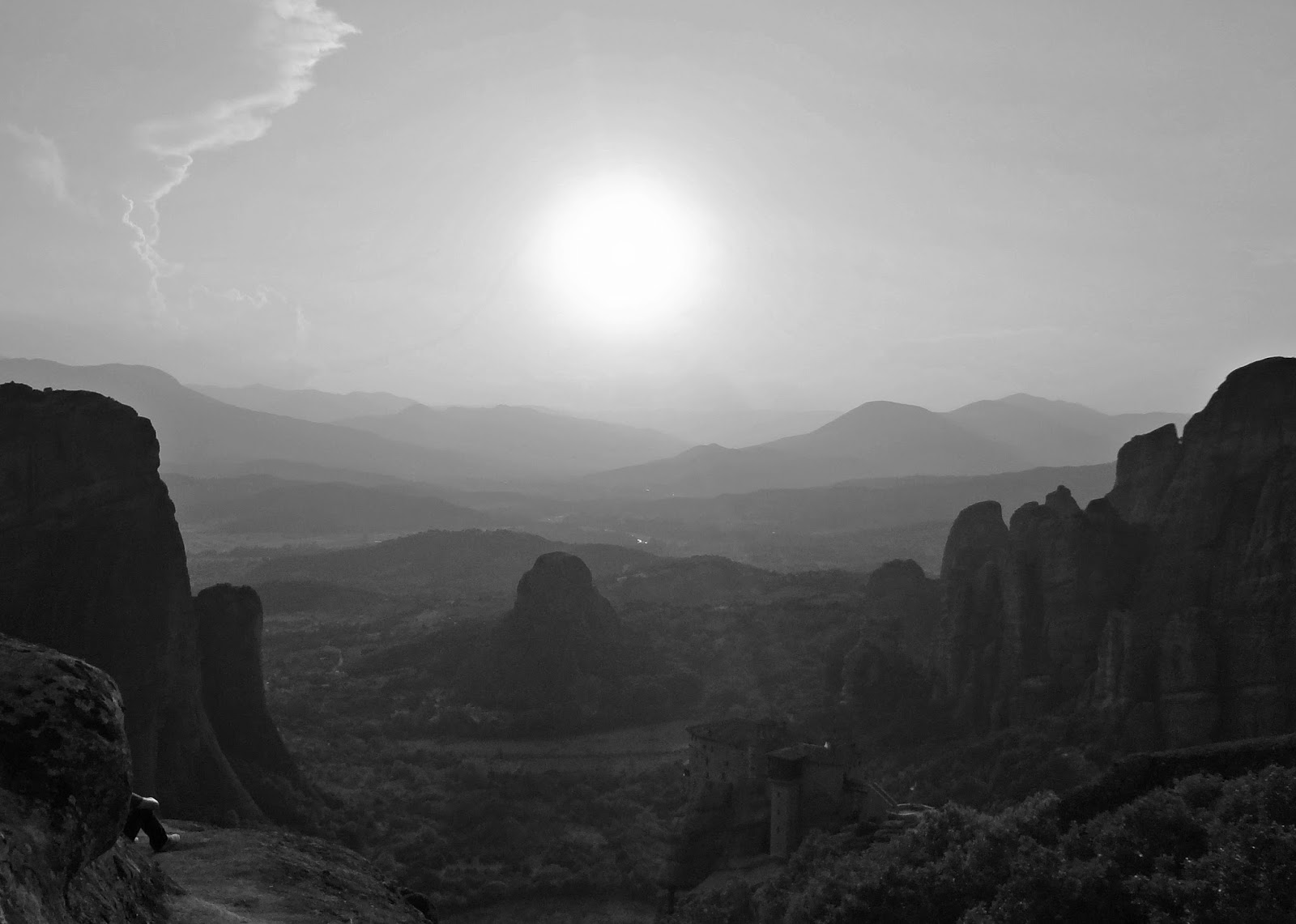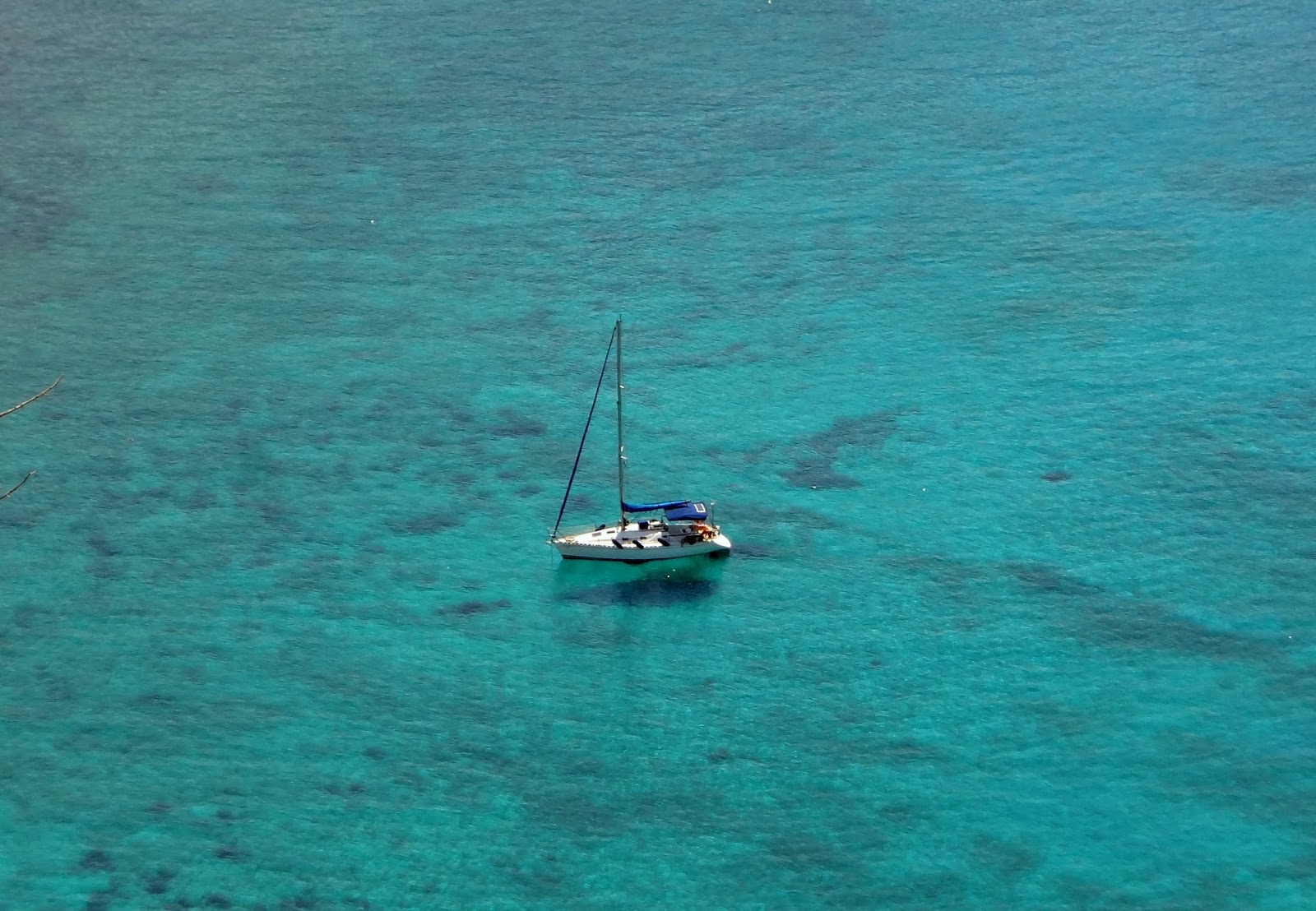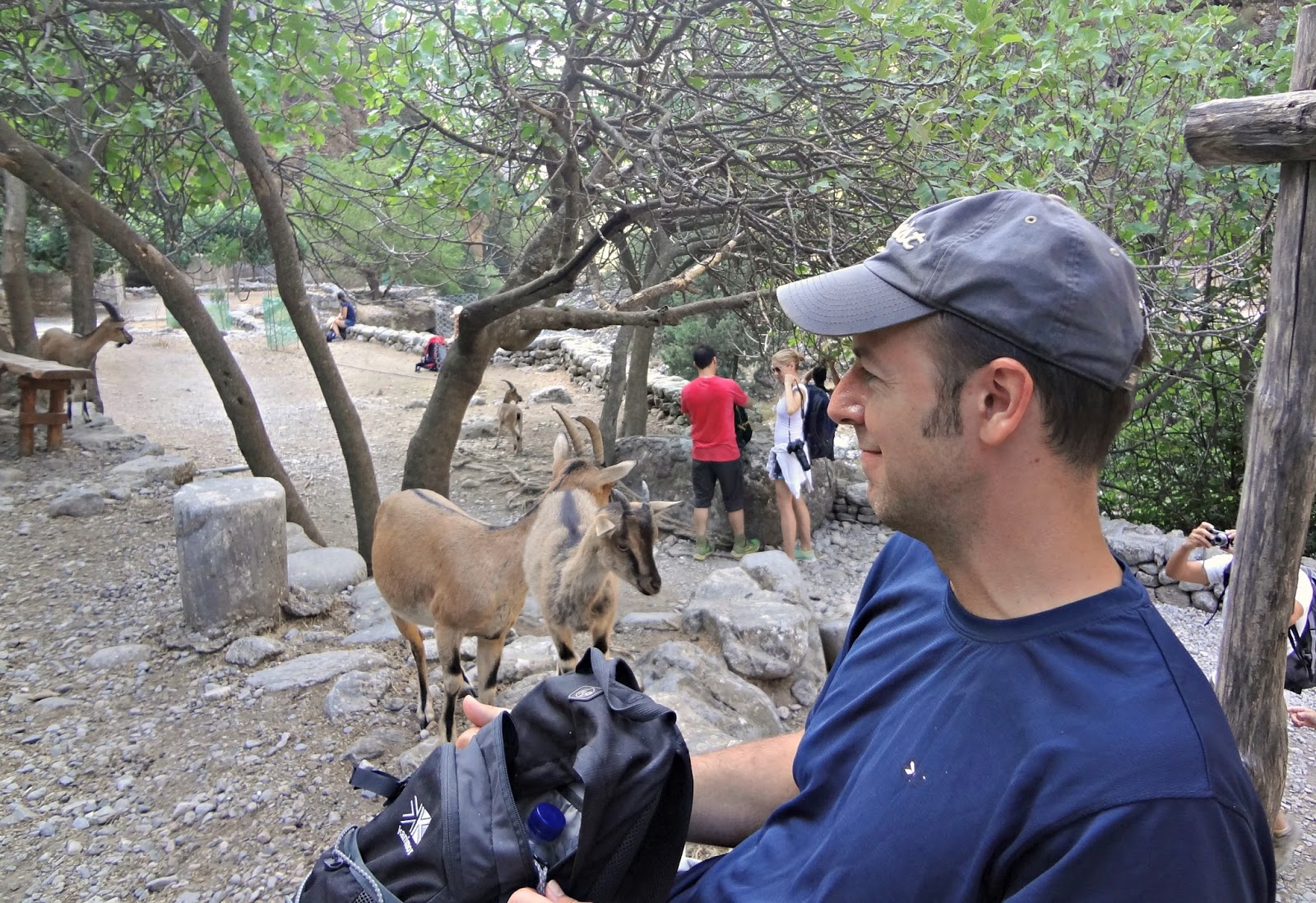Rule #2 is "You look skinny, have some more to eat." These are my gems of wisdom after almost 3 weeks touring around Greece. It's an amazing country and I'm really happy I got to see as many different sides of it as I did, and I'll tell you about all these wonderful places in my next post. But first, the rules....
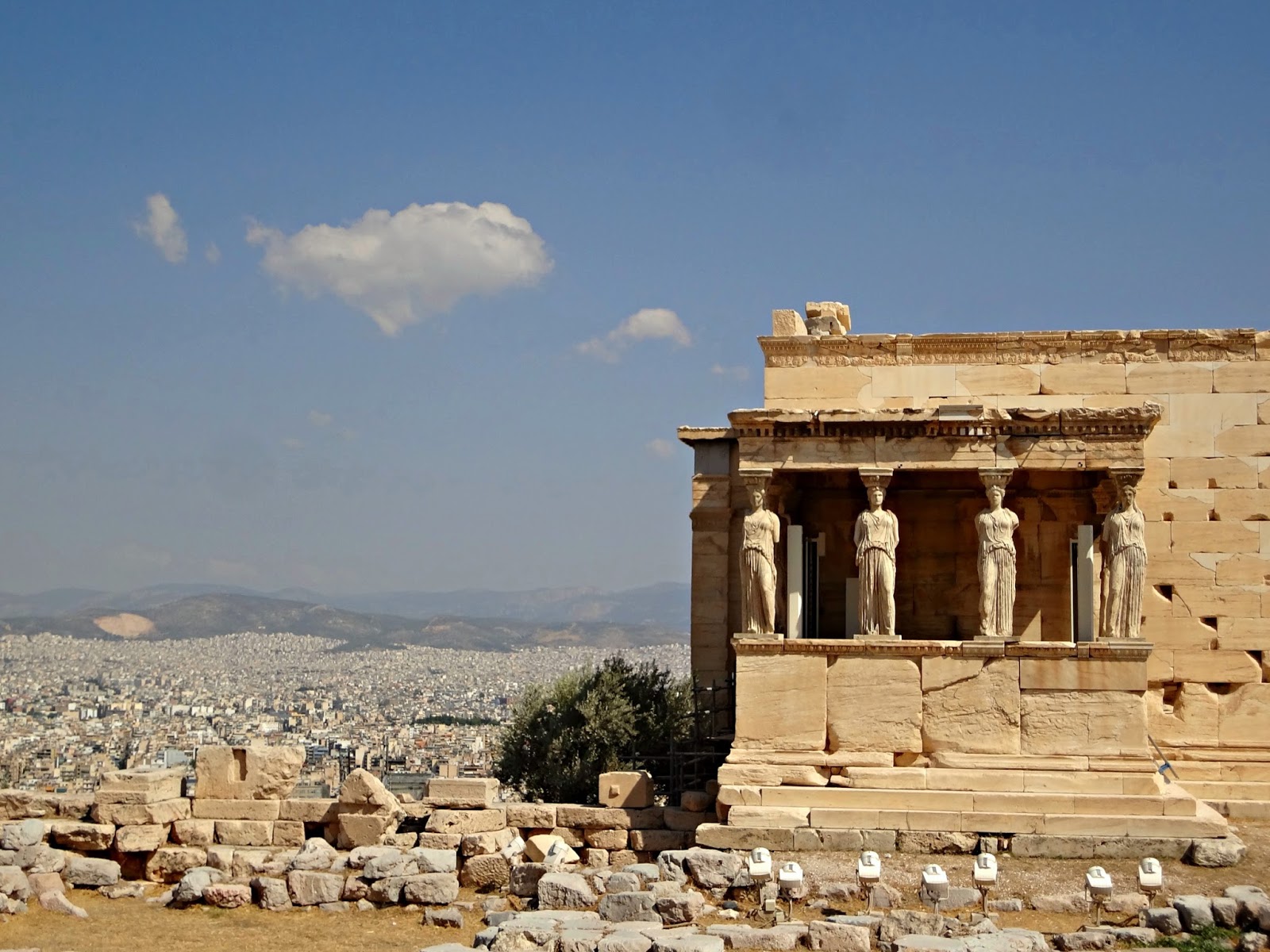 |
| Can't get much more Greek than this; caryatid columns and Athens stretching in the distance like an ocean |
Rule #1 comes from the fact that Greece has the highest driving fatality rates in western Europe, and some unique driving habits that aren't immediately apparent to the outsider. On the whole, the roads are very well maintained and cars are in good condition, but the local driver seem to consider concepts like "speed limits", "lanes", "road shoulders", and even "oncoming traffic" more as suggestions, probably best followed by other drivers. At any given time, what looks to an American driver like a simple 2-lane country road may be occupied by 1, 2, 3, or 4 side-by-side cars, traveling at different speeds in both directions. This can at times be a source of stress to the unfamiliar driver. In another variation from the States, turn signals in Greece are typically used to signal when you wish someone else to get over the the right or left of the road, not for signalling your intentions. Throw in narrow winding mountain roads without guard rails, large tour buses, and aggressive local drivers who won't hesitate to pass large tour buses on narrow winding mountain roads without guard rails... well, it's a recipe for drinking after driving. Don't worry though, Malissa, Dave, and I came through without any injuries, and so did the pair of cars we rented during the trip.
 |
| Looking up toward our hotel from the harbor in Naxos |
 |
| Small village life in Halki on Naxos, complete with grape vines |
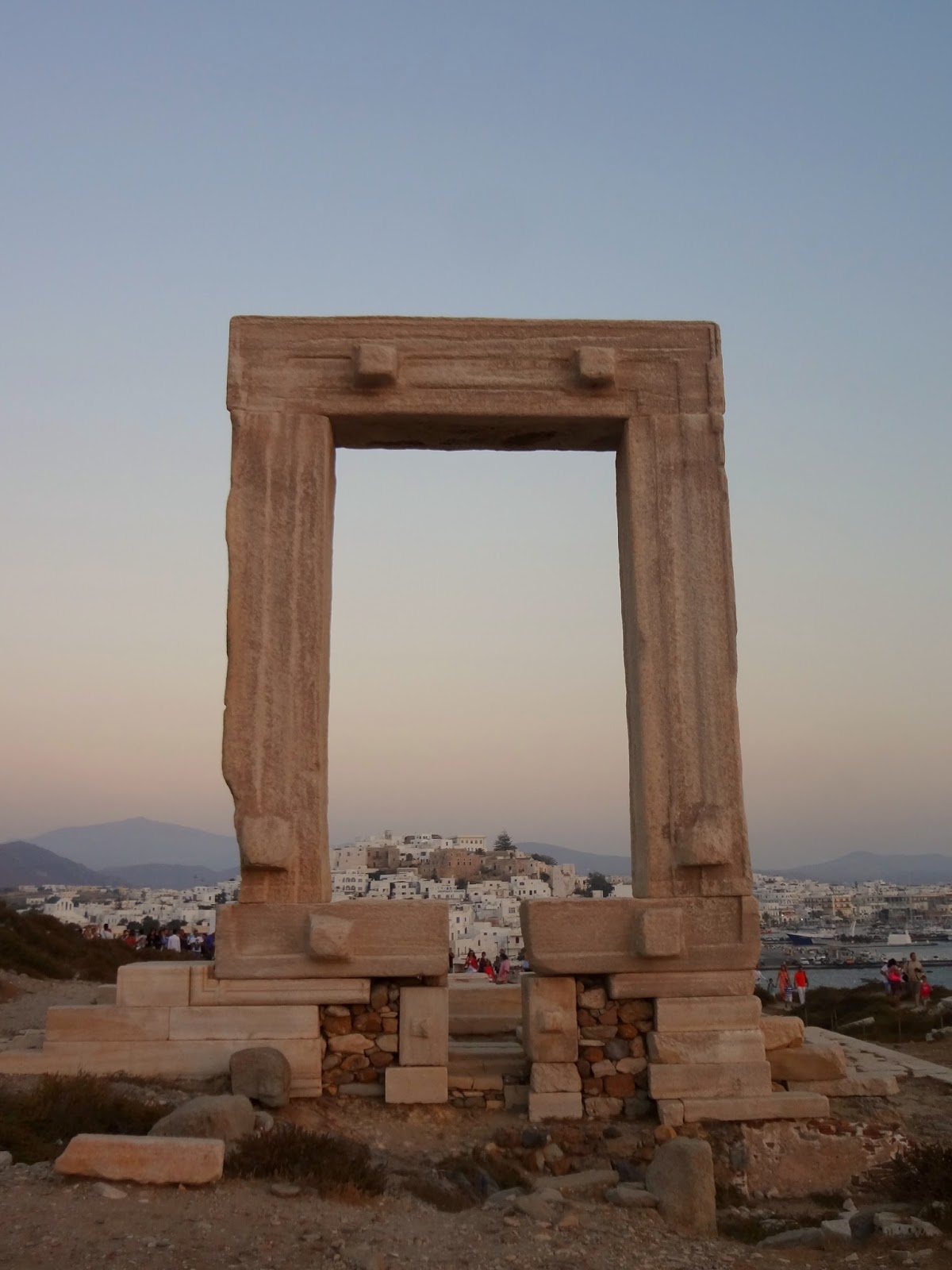 |
| Looking at Naxos through the Temple of Apollo doorway |
Thanks to my poor skills with manual cars, I did mercifully little driving (thanks Malissa!), which left me time to admire the beautiful views, try to ignore the oncoming traffic in our lane, and wonder what all the little shrines along the road were. Very soon into our first day driving, we noticed what looked like miniature churches on stands by the side of the road; first one, then a couple more, then dozens over the course of the day. Our first thought was that they were remembrances of loved ones who died in accidents on the road, as you see in the States, but quickly decided there were too many of them for that. When we finally asked someone what they were, it turned out that our original assumption was correct; there really are that many fatal accidents to memorialize. The funny part is that the person we asked was the rental car company representative (after returning the car, thankfully). To his credit, he didn't sugarcoat it, even if he seemed a little embarrassed. So to sum up, take the bus or train, hire a driver, or fly between spots. The reduced stress is worth the added time or expense. Or if you're really good at driving stick and you want to pretend you're James Bond escaping the bad guys, rent a powerful car and go have "fun".
 |
| The valley behind Delphi |
 |
| Delphi |
 |
| Ruins at the Temple of Athena, Delphi |
The second rule reflects that the food I had in Greece was good, really good. Always really good. And in large quantities. The menus usually have sections for "cold meze" and "hot meze", which I usually read as "tapas" or "small plates", but somehow I never ceased being surprised after ordering one or two meze and a larger plate that I would receive enough food to feed a table of four. The real problem was I was sitting at a table of four, and all of us did the same thing. I swear, we did our best, but our best just wasn't good enough to finish off that much food, especially in 90 degree sunshine. I"m not going to lie... there was a lot of basking in the sun this trip, as everyone knows, there's really nothing like eating your own weight in food and then wearing a swimsuit in public to enhance your self-image. I compensated by imagining I was a crocodile who had just brought down a water buffalo, because no one tells a crocodile that he's looking chunky.
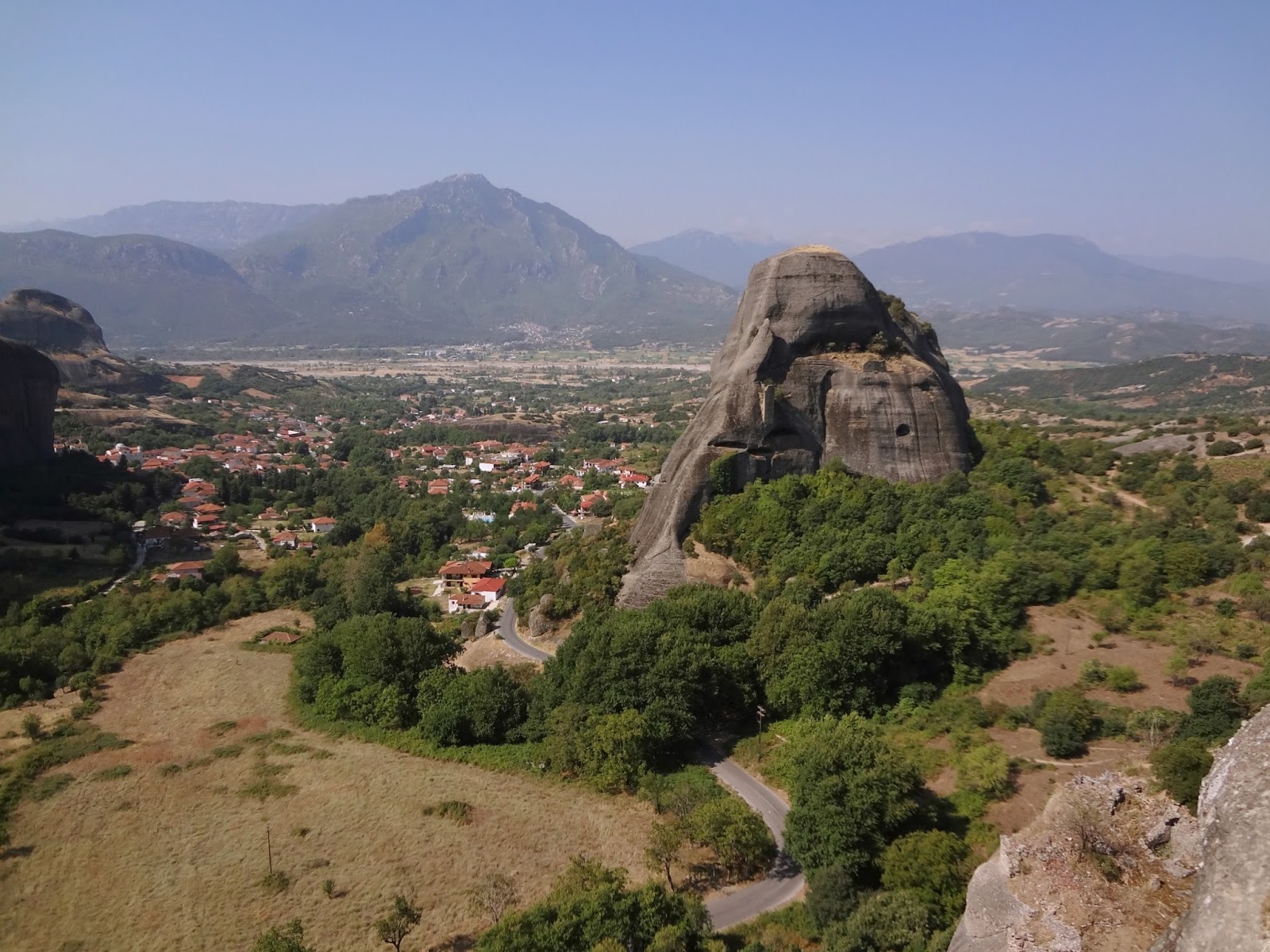 |
| The town of Kalambaka, below the monasteries of Meteora |
 |
| The nunnery of St. Barbara |
 |
| The monastery of the Holy Trinity |
But wait, it gets even better. The reputation for "Greek hospitality" is not over-exaggerated (most sentences end with "my friend"), and the restaurants are in fierce competition with each other, so not only did my friends and I consistently order twice as much food as would be comfortable to eat, but there were complimentary desserts! And complimentary coffee or liquor after the complimentary desserts! And once, complimentary desserts after the complimentary desserts!! I tried to say no several times (really!), but they just don't take no for an answer; you
will eat their free food. This has two effects; you're going to eat more than you might consider "too much", and getting the check will take you at least 30 minutes longer than you're expecting. So please picture this: it's 10:30pm, you've just eaten a pint of tzatziki, a loaf of bread, maybe some calamari, grilled lamb, and a garden's worth of greek salad (topped with a shingle-size slab of feta), and here comes your waiter, bearing ice cream sundae and a vial of raki. How are you supposed to say no? (PS, don't drink the complimentary raki, it's basically moonshine).
 |
| The Venetian Harbor in Chania, on Crete |
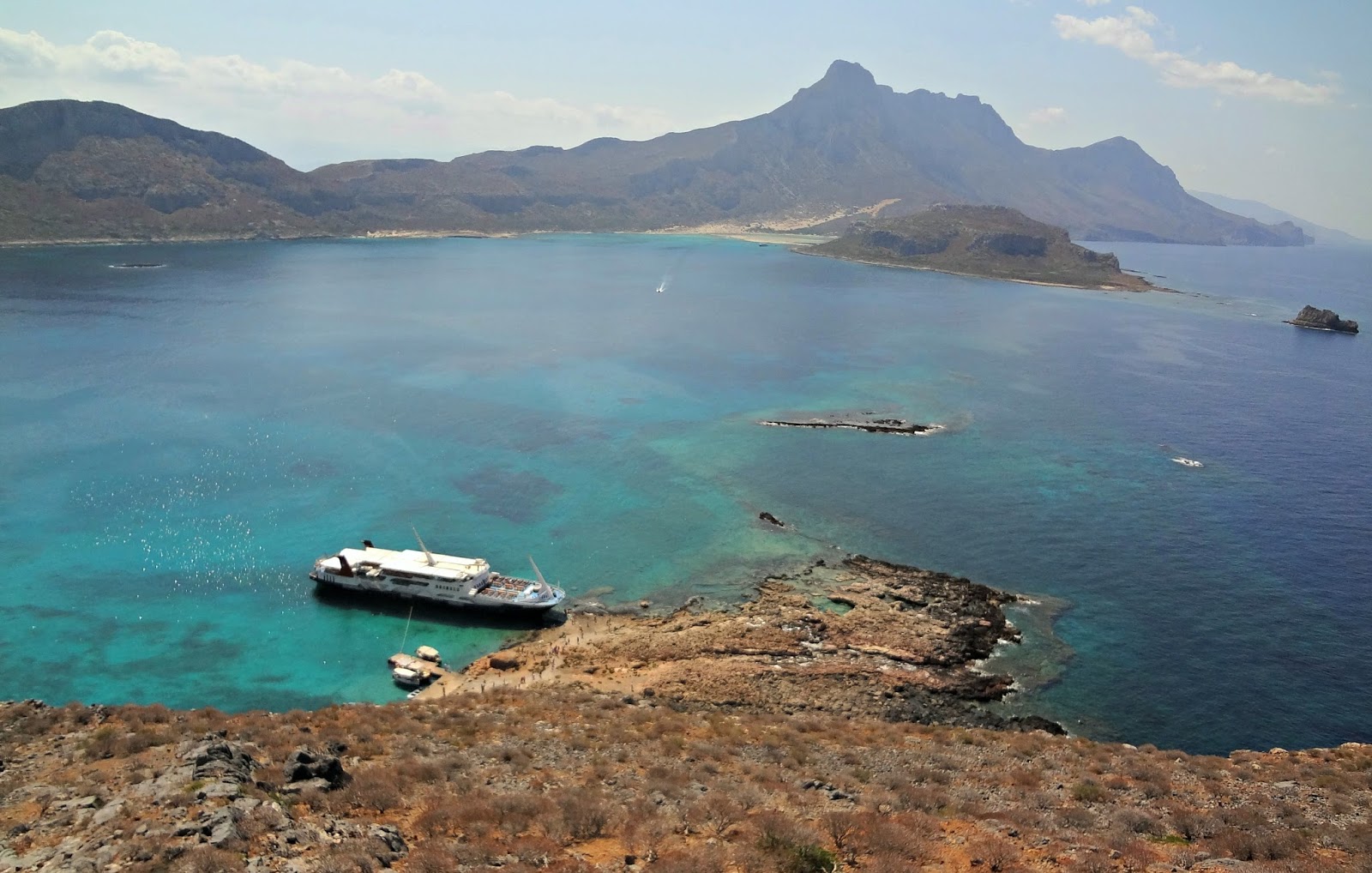 |
| The view from Gramvousa Fort on Crete |
Here's one more story about the food (and my first un-exaggerated one). My last day in Thessaloniki I was scolded by the hotel for checking out late, but what I didn't tell them is that I was only late because I didn't factor in the extra "complimentary" time. I stopped for lunch at this amazing seafood place (Frutti Di Mare, it's going on the recommendations page I'm working up), finished my meal, and asked for the check with 40 minutes before I planned on checking out. I thought I was safe because it was only a light lunch (ie, complimentary bread, complimentary dip, fried squid, french fries, and a plate of grilled vegetables).
"Can we offer you some complimentary dessert, my friend?"
"No, thank you, I have to go, just the bill please."
"Are you sure? It's very good. Maybe some coffee?"
"No thanks, I'll be late if I do."
(Puzzled expression at this concept of "late") "Are you sure, my friend? Just a little coffee maybe?"
One hour, one greek coffee, and one dessert later I walked into the hotel to get my bags. But he was right, that dessert was very good.
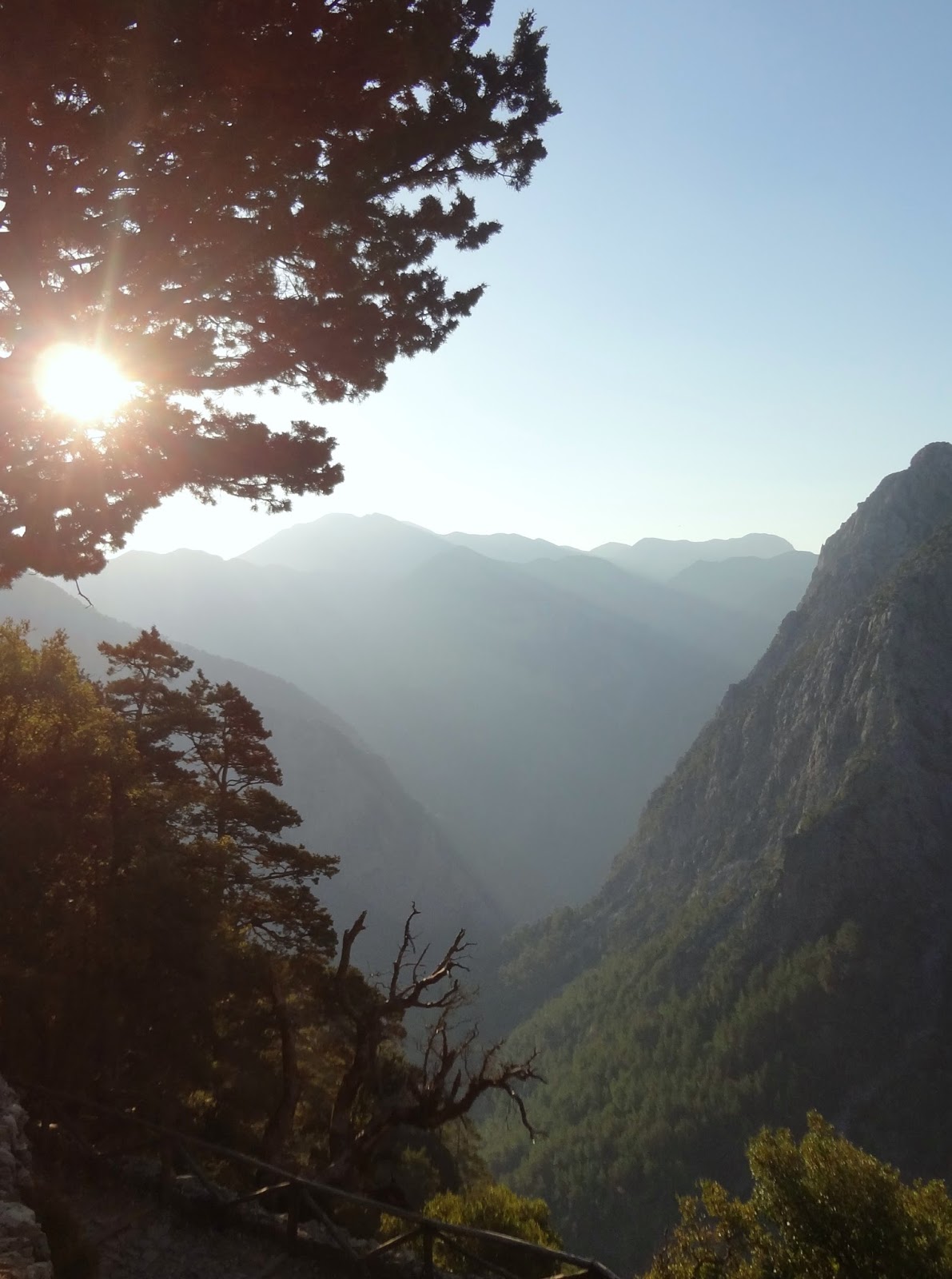 |
| Morning in Samaria Gorge, Crete |
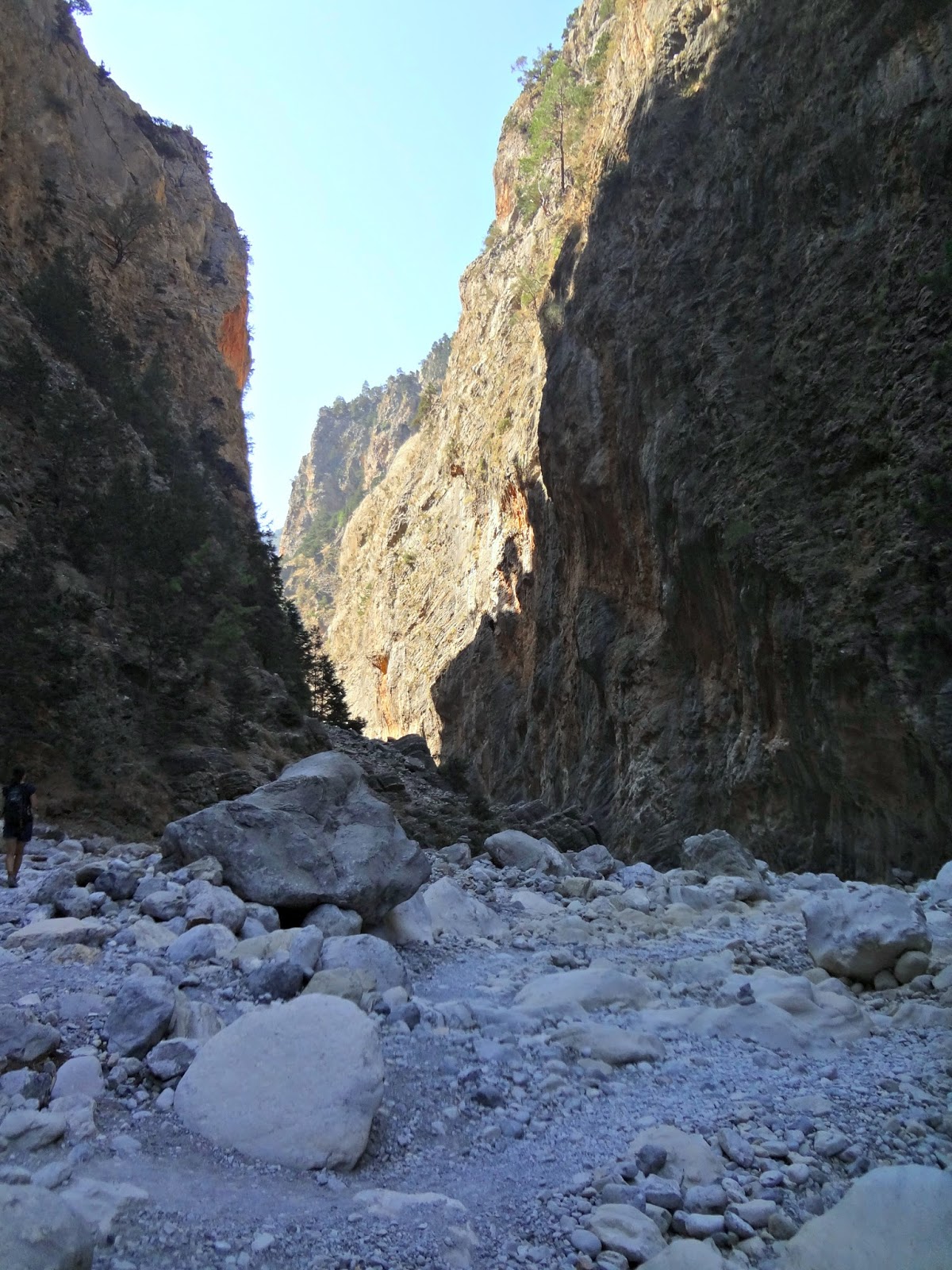 |
| Samaria Gorge near its narrowest point |
Now that I have the stories of white-knuckle driving and gorging out of my system (clarification: just the driving was white-knuckle, the gorging was totally relaxing), my next post will focus on all of the wonderful part of the trip like the sun, the sand, the sea, the natural beauty, the history... and probably more eating.
PS, I've also made some updates to the gear page for the two-month mark.
